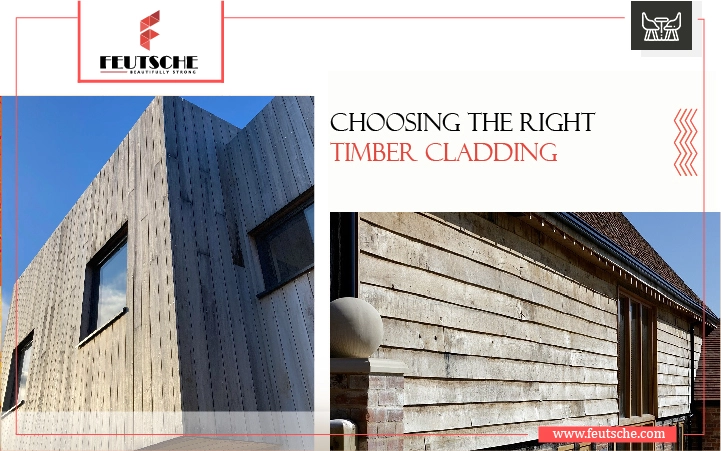Timber cladding is a popular choice for enhancing the aesthetic appeal and durability of buildings. Choosing the Right Timber Cladding is crucial to ensure that it meets your specific requirements. In this article, we will explore the different types of timber cladding, such as Vertical Timber Cladding, External Cladding, Exterior Timber Cladding, and Exterior Wall Cladding.
We will also discuss the factors to consider when selecting cladding and highlight popular cladding species. Furthermore, we will delve into the installation process, maintenance tips, and provide case studies of successful projects. By the end of this article, you will have a comprehensive understanding of how to Choosing the Right Timber Cladding for your needs.
Understanding Timber Cladding
Timber Cladding refers to the application of timber boards to the exterior of a building. It serves both functional and aesthetic purposes, providing protection against the elements while adding visual appeal. The benefits of Right Timber Cladding are numerous, including its natural beauty, versatility, and sustainability. When choosing cladding, several factors should be taken into account, such as durability, aesthetics, environmental impact, and cost.
Types of Timber Cladding
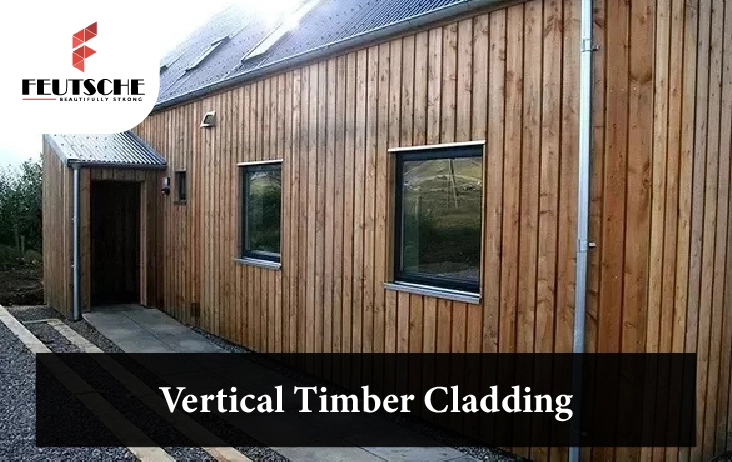
1. Vertical Timber Cladding
Vertical timber cladding involves installing timber boards in a vertical orientation, creating a distinctive and eye-catching appearance. This cladding style can be achieved with various timber species, offering different textures and patterns.
Advantages and Disadvantages
It offers excellent weather resistance, as the vertical orientation helps water run off the boards more effectively. It also provides a contemporary and unique aesthetic. However, it may require additional maintenance due to potential water penetration between the boards.
Suitable Application
Its cladding is suitable for both residential and commercial buildings. It is often used to highlight specific architectural features or as a striking design element on the entire facade.
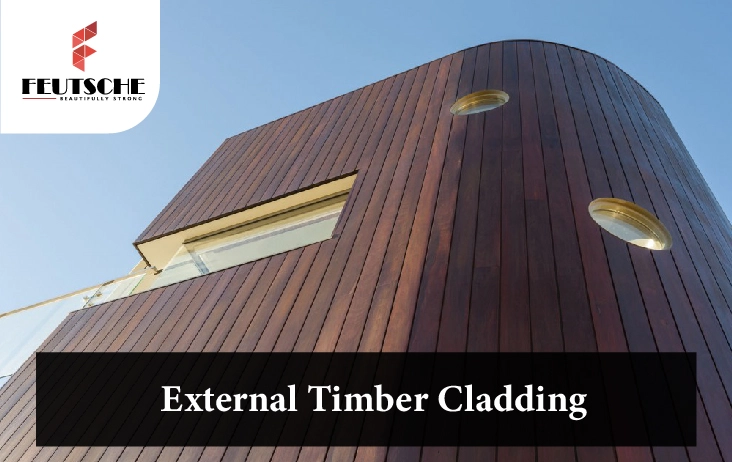
2. External Timber Cladding
External timber cladding refers to the application of timber boards on the exterior walls of a building. It provides protection against the elements while enhancing the building’s aesthetics.
Advantages and Disadvantages
It offers excellent insulation properties, improving energy efficiency. It also adds warmth and natural beauty to the building’s facade. However, it requires regular maintenance to preserve its appearance and protect against moisture damage.
Suitable Applications
External timber cladding is suitable for various building types, including residential homes, commercial buildings, and public structures. It can be used to achieve different architectural styles, from traditional to contemporary.
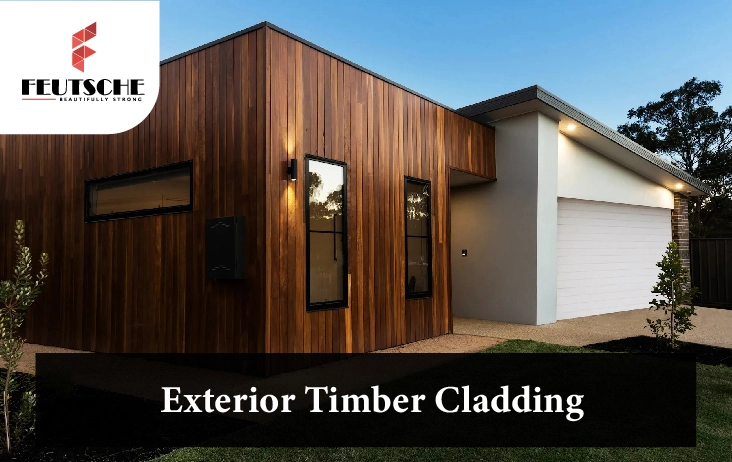
3. Exterior Timber Cladding
Exterior timber cladding encompasses the use of timber boards on the exterior surfaces of a building, including walls, roofs, and other architectural features.
Advantages and Disadvantages
Exterior timber cladding offers excellent durability and weather resistance when properly maintained. It also provides natural insulation and contributes to a healthy indoor environment. However, it may require periodic refinishing to maintain its appearance and protect against UV damage.
Suitable Applications
Its cladding is suitable for a wide range of building applications, from residential houses to commercial structures. It can be used to create a cohesive and harmonious design by integrating timber cladding across different exterior surfaces.
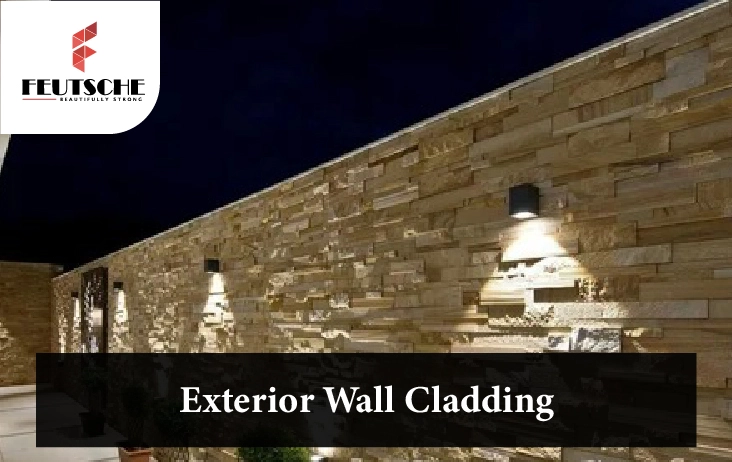
4. Exterior Wall Cladding
Exterior wall cladding involves the application of timber boards specifically to the walls of a building, providing protection and enhancing the visual appeal.
Advantages and Disadvantages
Exterior wall cladding offers excellent weather resistance and can be customized to suit various architectural styles. It also allows for easy installation and maintenance. However, it may be more susceptible to water penetration if not properly installed or maintained.
Suitable Applications
Exterior wall cladding can be applied to a wide range of buildings, including residential homes, commercial properties, and public facilities. It can transform the appearance of a structure, giving it a distinct personality.
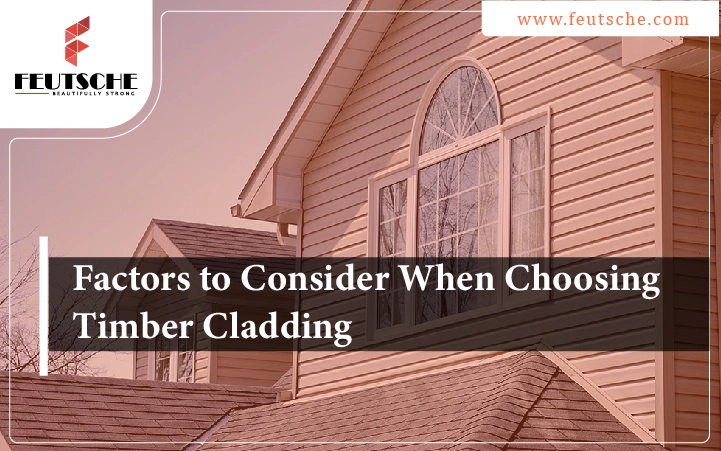
Factors to Consider When Choosing Timber Cladding
1. Durability
Resistance to Weather and Decay
When selecting timber cladding, it is crucial to consider its resistance to weather elements such as rain, sun exposure, and temperature fluctuations. The chosen timber species should be durable and capable of withstanding these conditions. Additionally, resistance to decay is essential to ensure the longevity of the cladding.
Maintenance Requirements
Different timber species have varying maintenance requirements. Some may require regular treatments, such as staining or sealing, to protect against moisture and UV damage. Understanding the maintenance needs of the timber cladding is essential for long-term durability.
Lifespan
The expected lifespan of timber cladding depends on its durability and maintenance. Choosing a high-quality timber species and implementing proper maintenance practices can significantly extend the cladding’s lifespan.
2. Aesthetics
Natural Wood Appearance
Timber cladding offers a wide range of natural wood appearances, including different colors, grains, and textures. Consider the desired aesthetic outcome and choose a timber species that aligns with your vision.
Range of Finishes and Colors
Timber cladding can be finished with various coatings and stains to achieve the desired color and finish. Ensure that the chosen timber species allows for different finishing options to match your design preferences.
Compatibility with Architectural Style
The timber cladding should complement the architectural style of the building. Consider whether a particular timber species aligns with the desired aesthetic and architectural character of the structure.
3. Environmental Impact
Sustainable Sourcing
Choose cladding that comes from sustainable and responsibly managed sources. Look for certifications such as the Forest Stewardship Council (FSC) to ensure the timber’s sustainability.
Certifications and Standards
Verify if the timber cladding has undergone testing and meets relevant standards for quality and performance. Certifications such as the British Standards (BS) or the European Technical Approval (ETA) provide assurance of the cladding’s quality.
Life Cycle Analysis
Conduct a life cycle analysis to evaluate the environmental impact of the timber cladding throughout its entire lifespan. Consider factors such as energy consumption, carbon footprint, and recyclability.
4. Cost
Initial Costs
The initial cost of timber cladding includes the purchase price of the timber boards, installation materials, and labor. Compare the costs of different timber species and installation methods to stay within budget.
Long-Term Costs
Consider the long-term costs associated with timber cladding, including maintenance expenses, repairs, and potential refinishing. Choosinga durable and low-maintenance timber species may result in lower long-term costs.
Value for Money
Evaluate the overall value for money by considering the durability, aesthetics, and environmental impact of the timber cladding. Opting for a high-quality and sustainable timber species may provide better value in the long run.
Popular Timber Cladding Species
1. Cedar
Cedar is a popular choice for timber cladding due to its natural durability and resistance to decay. It has a beautiful reddish-brown color and distinctive grain patterns, adding warmth and character to the building’s exterior.
2. Larch
Larch timber cladding is known for its excellent durability and resistance to weather elements. It has a golden or reddish-brown color that weathers to an attractive silver-gray over time, giving a rustic and charming appearance.
3. Oak
Oak cladding offers exceptional strength and durability. It has a rich, golden-brown color and a prominent grain pattern that adds a timeless and elegant touch to any building.
4. Accoya
Accoya is a modified timber that undergoes a process called acetylation, significantly enhancing its durability and stability. It offers excellent resistance to decay, making it suitable for various applications.
5. Thermowood
Thermowood is created through a heat treatment process that improves its durability and stability. It has a warm brown color and an attractive texture, providing a unique and natural look to the cladding.
Installation and Maintenance
A. Installation Process
Preparation and Fixing Methods
Proper preparation of the surface and the use of appropriate fixing methods are crucial for the successful installation of timber cladding. Ensure that the substrate is structurally sound and suitable for receiving the cladding. Choose reliable fixing methods that allow for expansion and contraction of the timber.
Ventilation and Insulation Considerations
Proper ventilation behind the timber cladding is essential to prevent moisture buildup and promote airflow. Consider incorporating insulation materials to enhance energy efficiency and thermal performance.
Fire Safety Regulations
Comply with local fire safety regulations when installing timber cladding. Ensure that the chosen timber species meets the required fire resistance standards and implement fire protection measures if necessary.
B. Maintenance Tips
Cleaning and Preserving
Regularly clean the timber cladding to remove dirt, debris, and mold growth. Follow manufacturer recommendations for cleaning products and techniques. Apply suitable finishes or coatings to protect the timber from moisture and UV damage.
Repai-ring and Replacing Damaged Boards
Inspect the timber cladding periodically for any signs of damage or deterioration. Promptly repair or replace damaged boards to maintain the cladding’s integrity and prevent further issues.
Conclusion
Choosing the Right Timber Cladding is essential to achieve a visually appealing, durable, and sustainable building exterior. Consider factors such as durability, aesthetics, environmental impact, and cost when selecting timber cladding. Explore different types of cladding, including vertical cladding, external timber cladding, exterior timber cladding, and exterior wall cladding.
Evaluate popular timber cladding species such as cedar, larch, oak, Accoya, and Thermowood. Understand the installation process, maintenance requirements, and gather inspiration from successful case studies. By making informed decisions, you can ensure that your timber cladding not only enhances the appearance of your building but also withstands the test of time.
FAQs
Q1: What factors should I consider when choosing Right timber cladding for my project?
Ans: When selecting timber cladding, consider factors such as durability, maintenance requirements, appearance, sustainability, and cost. Assess the timber’s resistance to decay and weathering, the level of maintenance it requires, its aesthetic appeal, whether it is sustainably sourced, and how it fits within your budget.
Q2: How do I determine the durability of timber cladding?
Ans: Durability of timber cladding depends on its natural resistance to decay and insect damage. Look for timber species with a high natural durability, such as cedar, cypress, or teak. Additionally, consider the cladding’s treatment options, such as preservatives or protective coatings, to enhance its longevity.
Q3: Are there specific maintenance requirements for timber cladding?
Ans: Yes, timber cladding requires regular maintenance to prolong its lifespan and preserve its appearance. The maintenance needs vary depending on the timber species and finish used. Some may require periodic cleaning, staining, or resealing. Research the specific maintenance requirements for the timber species you are considering to ensure you can meet them.
Q4: How important is the appearance of Right timber cladding?
Ans: The appearance of timber cladding plays a significant role in the overall aesthetic appeal of your project. Consider the color, texture, grain pattern, and natural variations of the timber species. Decide whether you prefer a natural weathered look or if you plan to apply finishes or stains to achieve a specific appearance.
Q5: What are the environmental considerations when choosing Right timber cladding?
Ans: Sustainable timber cladding options help minimize environmental impact. Look for timber that comes from well-managed forests certified by organizations like the Forest Stewardship Council (FSC). Consider the timber’s carbon footprint, its renewability, and whether it is a locally sourced material.
